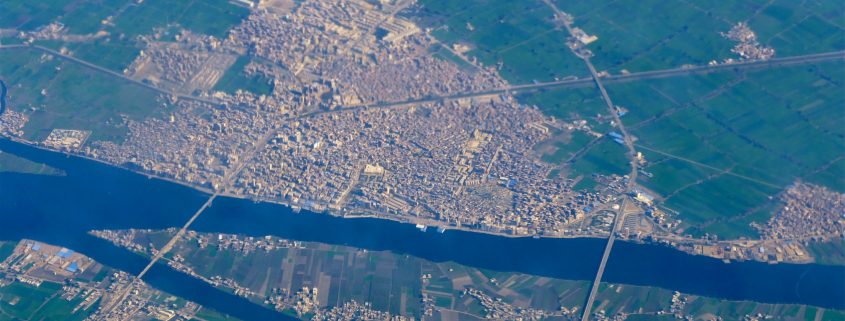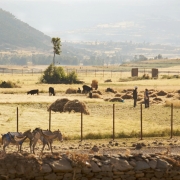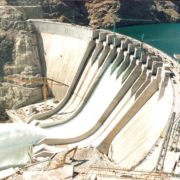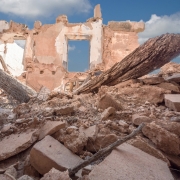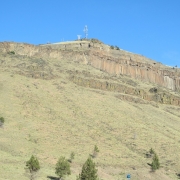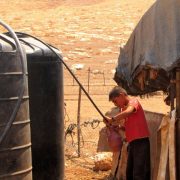HotSpots H2O, March 5: Spotlight on the Grand Ethiopian Renaissance Dam
The Rundown
Ethiopia is building a mega-dam along the Nile River, and the ambitious project is straining relations with downstream Egypt.
Construction of the Grand Ethiopian Renaissance Dam began in 2011. The $4 billion dam is now two-thirds complete and will likely be finished by the end of 2018. Upon completion, it will be the largest dam in Africa, towering over 500 feet tall and generating more than 6,000 megawatts of energy. Ethiopia says the dam will build industry and bring electricity to millions.
Egypt, however, fears that Ethiopia could use the dam to control the Nile’s flow. Although hydroelectric power stations do not consume water, the speed with which Ethiopia fills the dam will alter the flow downstream. Egypt is critically reliant on the Nile, which provides more than three-quarters of the country’s water.
The two countries, along with Sudan, have been in negotiations over the dam for months. Aside from military action, Egypt can do nothing to stop the dam, so Egypt’s leaders are trying to protect their share of the river through diplomatic means. Egypt and Ethiopia insist that the Nile “should not be a source of conflict,” but discussions over the dam have been fraught with tension and delays.
“It’s not about control of the flow, but providing opportunity for us to develop ourselves through energy development.” –Seleshi Bekele, Ethiopia’s Minister for Water, Irrigation, and Electricity, in reference to the country’s plans for the Grand Ethiopian Renaissance Dam. Ethiopia’s Prime Minister Hailemariam Desalegn, who recently resigned, claimed that the dam should “provide an opportunity for cooperation” and “never become a source of competition, mistrust or conflict.”
By The Numbers
6,450 megawatts Amount of energy that will be generated by the Grand Ethiopian Renaissance Dam. It will be the largest dam in Africa.
75 million Number of Ethiopians who currently do not have access to electricity. The dam will supply power to millions.
85 percent Amount of Egypt’s water that is supplied by the Nile River.
7 years Length of time until Egypt is predicted to experience water shortages, according to the United Nations.
Science, Studies, And Reports
A study by the Geological Society of America warns that the Nile’s water levels could drop by 25 percent for up to seven years as Ethiopia fills the reservoir behind the Grand Ethiopian Renaissance Dam. The speed at which Ethiopia fills the reservoir has been a key point of contention. Ethiopia hopes to fill the reservoir in just 3 years, which would severely reduce the flow of the Nile in the interim. Egypt has requested that Ethiopia lengthen the timeline to 12 years.
On The Radar
Egypt, Ethiopia, and Sudan were scheduled to meet from February 24-25 for another round of negotiations. The meeting was postponed, however, due to fierce anti-government protests in Ethiopia. The country’s Prime Minister Hailemariam Desalegn stepped down amid the protests, and Ethiopia’s ruling party has yet to appoint a new leader. Egypt’s President Abdel Fattah el-Sisi says he understands the reason for the delay, but hopes discussions over the contentious dam will resume as soon as possible.
Resources and Further Reading
Egypt accepts delay of Ethiopia dam meeting as protests rage (The Washington Post)
Ethiopia’s Huge Dam Causes Worry in Egypt (Voice of America)
Ethiopia’s Ruling Party to Choose New Leader as Protests Rage (Bloomberg)
In Africa, War Over Water Looms As Ethiopia Nears Completion Of Nile River Dam (NPR)
Increased Land Subsidence and Sea-Level Rise are Submerging Egypt’s Nile Delta Coastal Margin (GSA)
The ‘water war’ brewing over the new River Nile dam (BBC)
Kayla Ritter is a recent graduate of Michigan State University, where she studied International Relations and Teaching English to Speakers of Other Languages. She is currently based in Manton, Michigan. Kayla enjoys running, writing, and traveling. Contact Kayla Ritter

